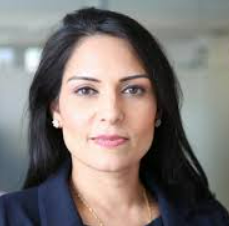
Charlie Brooks
Sep 07, 2022 14:27

The greater your money, the more doors you can open. It might be difficult to determine how to invest $200,000 in various investment vehicles because you have so many possibilities. Here, you can begin your investment journey by reviewing our accumulated investment ideas.
A lump sum of $200,000 is a substantial amount of money; three to four times the average American household income is $200,000. Despite greater recommended retirement savings, the average person at retirement age has approximately $200,000 in savings. Investing $200,000 can considerably shorten the time between now and retirement.
The average household income in the United States is approximately $63,000 annually. To earn $200,000 before taxes, the average American household must work for 3,2 years.
A windfall of $200,000 reduces your working career by more than 3.2 years. By investing in the lump sum, you can retire early. Now, your invested funds earn interest at a faster rate due to compounding.
For example, suppose you are 30 years old and have no retirement funds. You wish to retire with $1,000,000 in savings. A monthly investment of $675, yielding an annual return of 8%, would yield $1,000,000 after 30 years.
Now, say you are 30 years old and invest your $200,000 lump sum with a monthly contribution of $675. Due to your initial investment, you can now retire with $1,000,000 in 17 years, 13 years earlier than you could have otherwise. $200,000 might be a substantial cash boost. The majority of pensioners have only about $200,000 saved for retirement, and investing a large sum now will ensure you have more money at retirement age.
The average annual rate of return on the stock market is approximately 10%. Therefore, your initial $200,000 investment would generate in excess of $20,000 per year.
If you want to be a bit more conservative, experts recommend planning for between 6% and 7% growth. On a yearly basis, this equates to roughly $12,000 to $14,000.
However, you can increase this amount even further by continuing to invest monthly. While $200,000 is not a small change and will grow with time, acquiring additional money is possible if you have the means.
Obtaining $200,000 for investment is no minor feat. However, your total financial status may affect your investment options if you already have that amount in savings. For instance, credit card and student loan debt can weigh you down over time. Before deciding to make substantial investments, it may be preferable to eliminate your debt first.
Consider whether your monthly expenses and income will force you to use your savings in the future. If you do not have a consistent income, investing hundreds of thousands of dollars in long-term investments could compromise your capacity to cover your living expenses.

You will also need to evaluate your investment horizon. If your retirement is decades away, your investments have more time to grow. However, the shorter your investing timeframe, the more difficult it will be to reach your $1 million goal.
Mutual funds are another way to invest your $200,000 in the stock market. Mutual funds are investment vehicles that hold a diversified portfolio of stocks, bonds, and other securities.
Due to the fact that they hold a variety of securities, it is a very tempting investment option for someone with $200,000 to invest. Investing in a mutual fund as opposed to individual equities provides diversification, convenience, and lower fees.
According to Investopedia, the five largest stock market mutual funds are:
Vanguard Total Stock Market Index Fund Admiral Shares (VTSAX)
Fidelity 500 Index Fund (FXAIX)
Vanguard Institutional Index Mutual Fund (VINIX)
Fidelity Government Cash Reserves (FDRXX)
Vanguard Federal Money Market Fund (VMFXX)
Some individuals might ask how mutual funds vary from index funds. A passive index fund seeks just market-average returns (safe), whereas active mutual funds aim to exceed the market. This means that active mutual funds have greater fees and less predictable returns than index funds.
Your risk tolerance will dictate the kind of investments you are willing to make. Consequently, various investments offer varying returns. If you are risk-averse and prefer to invest in bonds and CDs, your path to $1 million will likely be so slow that you will never reach your goal.
Higher risk yields higher benefits. Investing in the stock market carries the money of financial loss, particularly in the short term, although market downturns tend to reverse course eventually. Assessing your starting point goes hand in hand with risk tolerance. In general, the longer you invest in the financial markets, the greater the growth of your capital.
You can never entirely eliminate risk while maintaining the possibility of larger profits while investing. Determine the level of risk you are willing to accept and invest your money in a variety of funds that can provide the returns necessary to achieve your objective.
However, you do not need to invest in small-cap index funds to generate excellent returns. The objective of investing in an S&P 500 index fund is not to outperform the market through specialized investments, and instead, it tracks the performance of the market's leading corporations. While still vulnerable to some degree of volatility, this fund has generated an average annual return of 10% for more than nine decades.
Although many believed that the general public would never accept cryptocurrencies, it appears that this is not the case. Bitcoin and other cryptocurrencies are accepted at increasing locations, and Bitcoin ATMs are proliferating worldwide.
The widespread adoption of Bitcoin has led some industry experts to predict that a single Bitcoin will be worth $200,000 or more within the next few years.

Using a cryptocurrency app, anyone may invest in Bitcoin and other cryptocurrencies, such as Ethereum and Litecoin. These applications securely hold your cryptocurrency until you are prepared to trade or sell.
There are two ways to generate money through investments. First, you can generate a profit by investing in an item that is anticipated to increase in value over time and selling it at a later period. The alternative is to invest in an asset that generates recurrent income for the duration of your ownership (also known as passive income). When properly executed, the decision to invest some of your money in stocks will allow you to attain both of these goals.
Some investors choose to invest in individual stocks so that they can learn more about the stock market, identify the most attractive possibilities, and experiment in the process. To begin trading individual stocks and obtaining a deeper understanding of how stocks operate, you need to open a brokerage account. You may decide to open an account with prominent brokers such as E-Trade, TD Ameritrade, Fidelity, Schwab, or Merrill. Once your account has been established, it is simply a matter of identifying the stocks that appeal to you the most, purchasing them, and holding on to them until their price increases or you begin receiving dividends.
Individual stocks may not appeal to all investors equally. Some investors seek immediate diversification and reduced risk in order to swiftly establish the proper basis. If this describes you, you may want to explore mutual funds or exchange-traded funds (ETFs). ETFs are ideal for novice investors because they allow you to invest in a variety of securities (which often track a particular index, hence the term index funds) that are frequently managed by a Robo-advisor, making them less expensive to maintain and easier to access. On the other hand, mutual funds comprise a wide variety of professionally managed, profit-seeking assets and are formed by combining your money with that of other investors. These may be a bit more expensive, but they are still a fantastic option for investors with an extra $200,000.
You can invest in index funds and mutual funds in your retirement accounts and strive to fill these accounts to their maximum.
If your workplace offers a 401(k) that matches employee contributions, but you aren't contributing enough to get the match, use your extra $10,000 to make room in your budget so you can contribute enough to receive the match.
You can also contribute to a Roth IRA or a traditional IRA. There are yearly contribution limits for these retirement accounts: $6,000 in 2022 (or $7,000 for those 50 or older). These retirement accounts can be utilized to plan for your retirement in the future. Your retirement accounts often invest in index funds, ETFs, and mutual funds, and because your investments are diversified, they are low-risk investments.
Frequently, businesses require investments of both time and money. If you have $200,000 to spare and the time to prepare a business plan, you can undoubtedly locate a terrific company concept. The sky's the limit for what you can accomplish with $200,000 if you put your mind and money into it. If you believe that starting your own business is the next logical step, you may wish to examine the following business ideas:
Creating a software-based enterprise that sells essential software solutions to individuals and companies (You Can Use Your Money To Start A Business And Hire Either Part-Time Or Full-Time Workers Or Freelancers To Help You With The Application Development Process)
Starting your own creative business, for instance, in graphic design (you can start selling t-shirts on platforms like Redbubble, Spreadshirt, or Zazzle) or music production.
Launching your own personal brand that focuses on nutrition, marketing, or self-improvement services and creates a variety of services and products to assist others in enhancing their lives.
Creating luxury products that buyers are prepared to pay for owing to their quality or brand (this can range from furniture to vehicles to fashion) (this can range from furniture to cars to fashion)
Opening a real store in which to offer your own goods or services.
There is no assurance that a business will be successful, but with the proper study and strategy, you can begin working on a business that you are passionate about and interested in. Consider the aforementioned suggestions to assist you in determining what you may want to achieve or obtain the inspiration you need to find the ideal business idea.
Investing in gold is comparable to investing in equities. Ten to fifteen percent of your $200,000 should ideally be invested in gold. There is a medium level of risk compared to the majority of the other listed investments. Ultimately, the objective of such an investment should be portfolio diversification.
Numerous authorities concur that investing in gold or other precious metals is crucial. These choices can frequently provide some protection against inflation. The majority of investors chose gold during a recession, causing the price to climb and the initial investment to appreciate.

There are numerous online resources for investing in gold. While some sellers specialize exclusively in real gold, such as coins and bars, this may not be the best strategy. Physical gold can be difficult to purchase and sell and can also be lost or stolen. Gold as an asset class represented by mutual funds or ETFs may be preferable.
Investing in yourself is one of the best investments you can make, and it can take many forms, such as pursuing a creative project, cultivating a talent, taking a course, learning a new skill, or picking up a side gig to earn $1,000 quickly.
Investing in yourself probably won't cost you $200,000, but putting your health first will enhance your energy and productivity at work, leading to greater results and more money overall.
Typically, a personal financial advisor will invest between 10 and 15 percent of one's money in real estate. A personal adviser can assist individuals in selecting solutions based on their risk tolerance. Growth is intended to provide passive income.
Investing in real estate is easy, and there are numerous platforms available. For instance, if you desire rental properties, there are REITs available. Real Estate Investment Trusts assist individuals in investing in real estate but do not act as landlords. Therefore, there are all the advantages of a rental property with no trouble. The constant expansion of the real estate sector allows you to invest $200,000 in several markets.
Not all investors should invest in Real Estate Investment Trusts (REITs) due to their possible illiquidity. Consequently, the investment objectives of this program cannot be guaranteed.
Not everyone is suited for entrepreneurship, especially if their lives are already fairly hectic. However, this does not mean you cannot get business benefits without devoting time to building your own enterprise. In reality, one of the best ways to invest your money is in the startup of another person.
Investing in someone else's business has advantages and disadvantages, making it an attractive investment proposition. By purchasing stock in money, you are able to get a return on your investment, allowing you to reap the profits without performing any of the effort required to build the firm. Nevertheless, you run the risk of losing your investment in the organization if it fails to advance as anticipated and the company fails to achieve its goals.

As an investor, it is essential to comprehend the specific risks connected with investing in firms and to do your own risk assessments and analysis of their business strategy and financial projections. If you are prepared to take this risk, you can easily locate platforms that allow you to connect with startups and provide them with the necessary cash to scale.
It is essential to remember that no single investment is fully risk-free or guaranteed to yield a significant return. It is, therefore, essential to diversify your portfolio's revenue.
This will allow you to keep more of your money, avoid possible drops in the stock market, real estate, and other markets, and provide you with a larger safety net if you must retire early.
If you're seeking safer investments with strong returns over the last 20 years or so, consider:
Government Bonds
Corporate Bonds
REITs
Preferred Stocks
These are regarded as safer investments since they are less susceptible to "investing the wave" than stocks and real estate investments. Instead, they have been somewhat more stable over the history of the American economy.
You already have $200,000 to invest and likely wish to diversify your portfolio. The next difficulty is determining where and how to invest your money. When making this option, the idiom "never put all your eggs in one basket" comes to mind. You simply need to choose based on an informed, risk-aware judgment that is consistent with your investment goals. You are halfway to achieving your financial goals; you just need to exert a little more effort, and your plans will be yours.

Sep 06, 2022 17:48

Sep 09, 2022 10:54